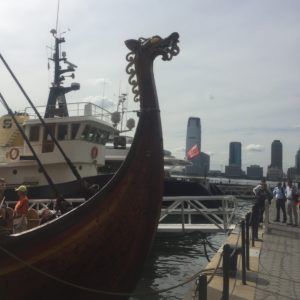
In Part I, I talked about how I approach researching a historical novel through reading. Reading does make up the bulk of my research, but I like to do other kinds of research as well.
Online Courses and Podcasts
The Great Courses have particularly good coverage of European and Near East history, though they do cover some other areas of the world. I’ve also listened to some of their courses on the literature and philosophy of eras of interest. Podcasts covering various aspects of history can also be a good resource.
Interviews
Interviews are especially helpful if you can find experts in your area of history, or people with experience of various aspects of that history. I hate bugging people, though, and their time is precious, so I try to read as much as I can first, and ask questions that I can’t find the answer to any other way.
But an interview with an expert can be a way to get started in a new area of research. For a novel I worked on while I was at NYU about various 12th century church conflicts, I talked to a medieval history professor who helped give me an idea of where to begin my research, and how to focus it a bit differently than I had planned.
Many writers talk to far more people than I do–I should do this more!
Travel
There’s no substitute for visiting in the place you’re trying to describe in a novel. In researching The Half-Drowned King and its sequels, I’ve traveled to Norway, Denmark, Sweden, and the Orkney, Shetland, and Faroe Islands. I feel very lucky to have been able to see all of those places.
In Norway I kayaked Geiranger Fjord, where some of the action in The Half-Drowned King and The Sea Queen takes place. In the Faroe Islands I tasted fulmar, which is a sea-bird and tastes like fish. In Skagen, Denmark, I saw where the North Sea meets the Baltic Sea, and was almost blown away by a winter gale. Pictures can help, but it’s nothing to the feel of being there.
Museums
Seeing the actual artifacts that your characters would have carried and used in every day life is a wonderful way to connect with them.
Experience
I love fiber arts (knitting, crochet, weaving, etc.) and during the writing of The Half-Drowned King, I learned to spin with a spindle and a spinning wheel. I also learned Nalbinding, which is a kind of needle-weaving done in Viking Age Norway. I liked spinning and kept at it. I did not particularly like Nalbinding, and I haven’t continued.
I am also into strength sports (lifting heavy things), and so I got into Strongman competition, which is practiced all over the world, but some events have their roots in Iceland–the Husafjell stone is an Icelandic stone that only the strongest men could lift. Now Husafjell stones are manufactured of steel and used in Strongman competition.
I helped crew a viking-style boat at the Viking Ship Museum in Roskilde Denmark.
I don’t know if I would have done the first two if I didn’t already lover fiber arts and strength sports, but they certainly contributed to giving the books more verisimilitude.
On the other hand, I didn’t learn card-weaving, which is another viking craft. I didn’t learn sword-fighting. I don’t know how to make cheese, except in the abstract. I’ve sat on a horse exactly once. So it’s good to have the experiences you can, but a little experience and a lot of imagination are probably a better combination than the other way around.
These types of research are best for getting a feel for the era (rather than learning specific facts), to create it in your mind so you can better re-create it in your readers’ minds.

